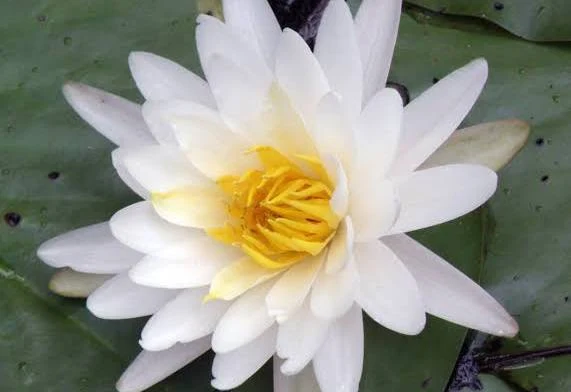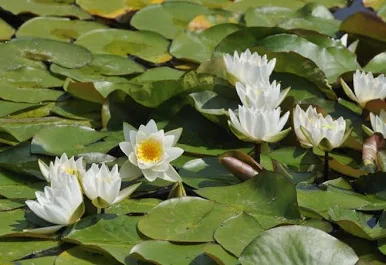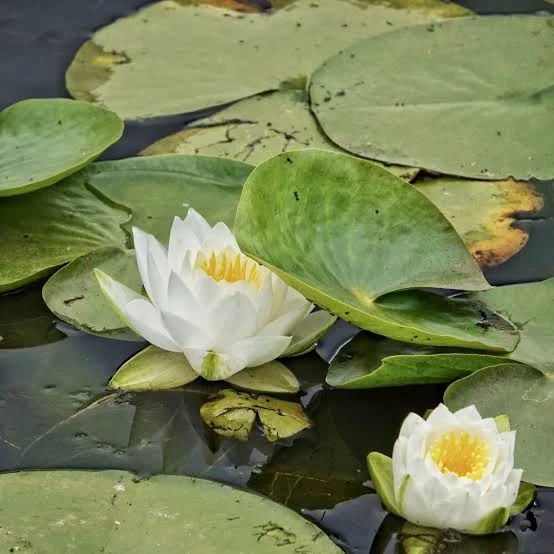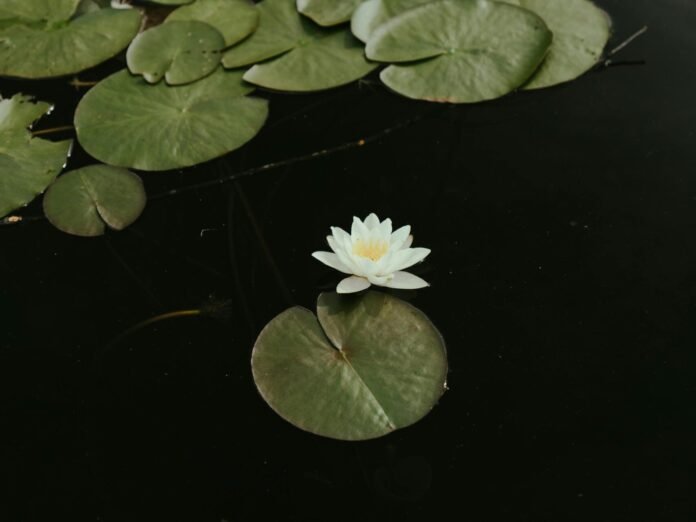Also known as Beaver Root, Fragrant Water-lily, Fragrant White Water-lily, Sweet-scented Water-lily, Sweet-scented White Water-lily, and White Water-lily
Family: Nymphaeaceae
Origin: From North America, through Cuba, Mexico, Central America, into Brazil and Guyana
Jack Greenlee, of the U.S. Forest Service, waxed, almost poetically, when he wrote: “This showy member of the water lily family is a beautiful plant to admire as you paddle a canoe around a lake or down a sluggish stream. The large white flowers are often fragrant, hence the specific epithet ‘odorata’. ‘Nymphaea’ derives from the attractive flowers, which are suggestive of the mythological Greek nymphs, beautiful supernatural female beings thought to inhabit glades and springs.”
He describes how it’s “found in quiet water up to 5 or 6 feet deep (with) stout rhizomes (having) spongy hollow spaces for storing oxygen that’s transported down the stems from the leaves. When a chunk of rhizome break(s), like an octopus tentacle, these rhizomes can sprout to start new colonies.”
Indeed, known for its large, fragrant, white flowers and broad leaves that float on the surface of ponds and lakes, it’s much more than just another pretty face! It’s a food and medicinal source, has significant ecological importance, and cultural implications.
Regarding the first, the rhizomes can be peeled and eaten raw, cooked, or dried and ground into flour. Those beautiful flowers can be consumed raw or cooked. Their seeds can be cooked or ground into a starchy meal, while their young leaves can be used in stews and soups. (I’d encourage use as a food, primarily, only when cooked due to potential parasitic infestation stemming from snails and slugs.) Furthermore, as in all things experienced for the first time, I’d strongly suggest your own research and consumption in moderation.
Ethnopharmaceutically, it has been used to treat colds, coughs, mouth abrasions such as ulcers and wounds, as well as sore throat. Generally speaking, it is the bulb and root that are used to make medicine. The former is anodyne, anti-septic, astringent, and demulcent.
In a tea form, made from its roots, it has been employed to stop bleeding, chronic bronchial complaints, dysentery, gastrointestinal inflammation, gland inflammation, gonorrhea, tuberculosis, and vaginal discharge.
A root poultice has been used to treat inflamed skin, tumors, and vaginitis. This intriguing plant is also said to treat diarrhea, reduce swelling, be employed for diseases of the throat, utilized as a poultice for burns and boils, and, possibly, even for uterine cancer.
Ecologically, Nymphaea odorata provides pleasant environs for fish, waterfowl, and other wetland-dwelling creatures. Its leaves, roots, and seeds are fodder for various critters such as beaver, deer, ducks, geese, fish, and moose.



It also plays a role in pollination of other plant species with its wonderfully fragrant flowers attracting bees and beetles, while its large, floating leaves act as mini-airfields for dragonflies and damselflies – as well as shelter for various arthropods – read “insects,” but I just had to use that word as an occasion for its employment, in general conversation, seldom rises!
As to its cultural interpretations and implications, numerous cultures have associated the Water Lily (this guy, plus his various international kin) with rebirth as a result of its flower’s daily cycle of opening and closing. Living in Thailand, I learned that Buddhists see it as a symbol of enlightenment in that it rises from the muddy water, similar to how enlightenment can emerge from difficult circumstances.
Furthermore, its association with purity stems from its ability to bloom beautifully while residing in those murky, wet environs. The Hindu religion views the Water Lily as a symbol of constancy, again due to its enduring beauty in spite of its residence in muddy conditions.
Likewise, in Chinese culture, it symbolizes purity, goodness, and elegance. (Sadly, little to none of which has ever been liberally used in discussing me!)
Additional Lily Nifty Nuggets of Knowledge: Roman writer Pliny the Elder (23 AD to 79 AD), naturalist, and philosopher who created the encyclopedic work, Naturalis Historia (Natural History) – and, by the way, who died during the eruption of Mount Vesuvius in 79 AD – suggested that they could be used as an antidote for love potions.
Lily blooms have been the inspiration of artists for a long time. In fact, Claude Monet (1840-1926) – founder of Impressionist painting and a key precursor to Modernism – painted over 250 works of them.
And Native American folklore was that the water lily was once a star that fell to Earth and transformed into a flower!


